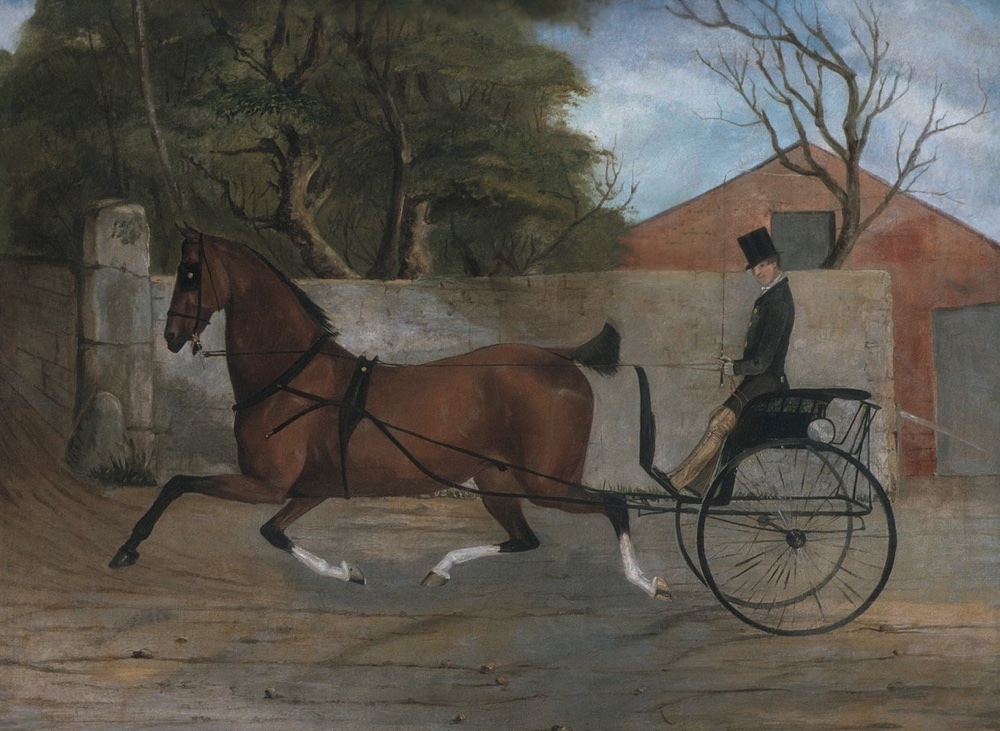It isn’t surprising that the cars we see on the roads today are descendants of horse-drawn carriages.
Nor is it surprising that parts of carriages found their way into the cars we happily sit in. But here are a few you might not have been aware of all the same.

Dashboard
The dashboard I suspect is something we take for granted. But if Meat Loaf (RIP) can belt out a song about a dashboard, then surely, I, the #horsewordnerd, can write 153 interesting words about where the term comes from.
As usual, we are going to have to cast our minds back in time, landing in the 1800s when we used to get about via a horse-drawn carriage. You see, back in those days, horses not only dashed through the snow, but they also dashed mud and dirt into the carriages with their hooves. An ingenious person, annoyed by the unfavorable occurrence of flying debris, attached a board or sometimes a leather apron to the front of the carriage to prevent this from happening. This board was aptly named the dashboard. Such a simple explanation.
It’s true that today our dashboards look completely different, and I doubt very much James Jim Steinman, who wrote Paradise by the Dashboard Light, would have written a song about a piece of wood preventing mud from flying into one’s face. But I’m not the brilliant Steinman, so who knows, maybe he could write a song about that.

Fifth wheel
I’ve always wondered where this “fifth wheel” is since there seems to be no extra wheel in use at all.
Many of us horse folk and/or RV owners have a gooseneck trailer, sometimes referred to as a fifth wheel, which describes the hitch. Though they are different, we tend to use the terms interchangeably.
In the days of carriages and wagons, there was a horizontal fifth wheel (or half a wheel) under the front of the carriage that allowed the front axle to pivot while turning and helped to stabilize the vehicle.
Today, that fifth wheel is fixed to the bed of our truck where we attach the horse trailer. Though we call this a hitch rather than a fifth wheel, the principle is still the same—it acts as the pivot point for turning—but looks nothing like a wheel.

Riding shotgun
Is there a person amongst us that hasn’t yelled out “shotgun” to claim the front passenger seat of the car? Doubtful. Most of us prefer to ride shotgun because it’s better viewing, and you have all the knobs on the dashboard to play with. However, in the 1800s you were more likely appointed to the position rather than yell and hit your sister in the face for it.
If you were riding shotgun in the Old West you would indeed be carrying a shotgun or a rifle. Your job, sitting beside the driver of the stagecoach, was to keep your eyes peeled for trouble lurking in bushes or atop a butte. This position had little to do with the passengers or the horses and everything to do with keeping the outlaws at bay who had set their sights on robbing your stagecoach.
It’s a big ask riding shotgun.

Spider or spyder
First of all, spiders are creepy, but in reference to vehicles, they are sporty. A spider is a convertible two-seater roadster, and you would likely feel pretty swish riding around in one.
In the 1800s a lot of open-air carriages retained their windows and siding, which left the top of the carriage open. Spiders, on the other hand, were true open-air vehicles with the removal of the window structures and basically anything that prevented you from falling out.
The name is thought to have derived from the appearance of the carriage being rather spider-like with its small body, and large wooden wheels with thin spokes.

Cabriolet
A cabriolet is not only another word for a convertible car but also where we get the name for cabs (aka, taxis). A cabriolet was a carriage for hire.

Car names
Many of the cars we see driving around today or back in the day are named after types of carriages. A Landau carriage, for example, is a luxury four-wheeled affair with a roof that can be pulled down. The sides of the Landau are low, thus allowing the passengers to show off their outfits. It was popular amongst aristocrats, sits four to six people and is pulled by two to four horses and is still used today in royal ceremonies.
The Ford Landau (Australia), on the other hand, is a muscle car and has little in common with the carriage other than perhaps its low-slung appearance.
A few other car models named after carriage models are the Cadillac Brougham, Mitsubishi Chariot and Volkswagen Phaeton. The name Phaeton comes from Phaethon, who was the son of the Greek God Helios, a notoriously bad driver of the sun chariot.
I’m sure there are several other hand-me-downs from carriages to cars that I have yet to unearth, but for now, we can thank horses and their olden-day trappings for some of the names of our modern-day luxuries.
Sources




 January 31, 2023
January 31, 2023 






















